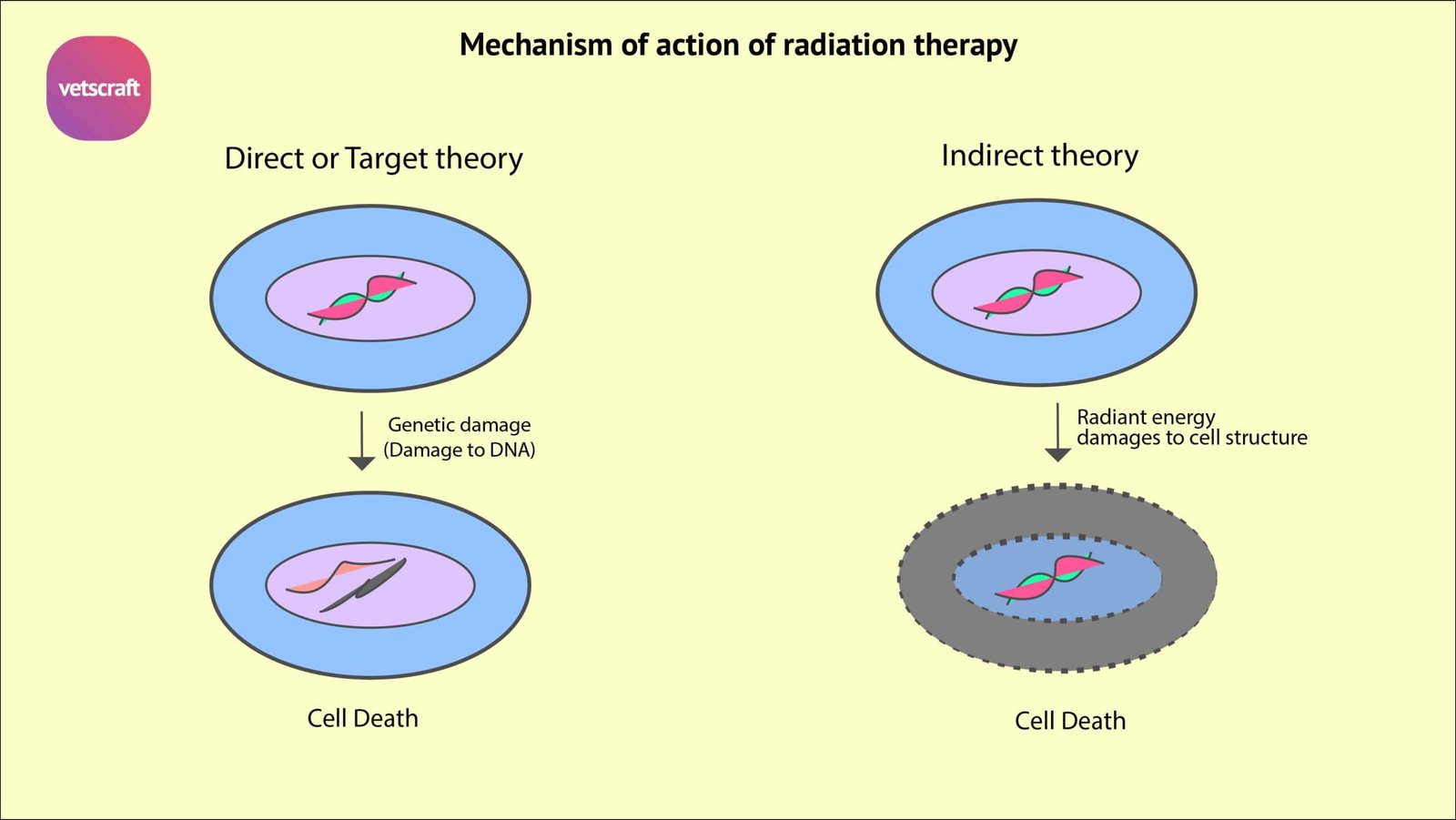TABLE OF CONTENTS
Application and mechanism of radiation therapy
Application of radionuclide in medicine and mechanism of radiation therapy in animals will be discussed in this post.
Application of radionuclide
Nuclear medicine is the field of medical science, which employs radioactive materials for diagnosis, and treatment of cases.
Radionuclides are also used in biological research and sterilisation of surgical instrument, syringes and dressing especially disposables.
Radio nuclides are also used for diagnostic application (Scintigraphy) have a short physical half life as use of such materials reduces radiation dose to patients in wide variety of diagnostic examination.
Numbers of radionuclides is used for the treatment of Neoplasms of animals.
Mechanism of action of radiation therapy
Radiation therapy works by two theory-
- Direct or Target theory
- Indirect theory

Direct or Target theory
The DNA molecule is the most important target of radiation in the cells, especially linkages and bonds within the DNA molecule.
Depending on the radio-sensitivity of the tissue and dose and duration of radiation, there are three principle effects on the DNA molecule-
- Genetic damage: If damage occurs in the germ cells, response is observed in the next generation.
- Cancer production: If proper dose is not used upto a particular period there will be derangement of DNA resulting in abnormal metabolic activity causing malignant disease.
- Cell Death: DNA plays an important role in cell division and is also important for maintaining life of the cell. When radiation damages DNA, cell division is interfered. This explains the death of cancerous cells by ionising radiation.
Indirect theory
Radiant energy exerts its effect by production of free ‘hot’ radicals, such as peroxides, within the cell that damage the specific target. The major component of the cell i.e. water molecule gets ionized into H+, OH– and other unstable particles such as H2O and H2 O2. Since these solutes are unstable, they react rapidly among themselves and other solutes with in the solution producing a crucial biological change in the cell which leads to the cell death.